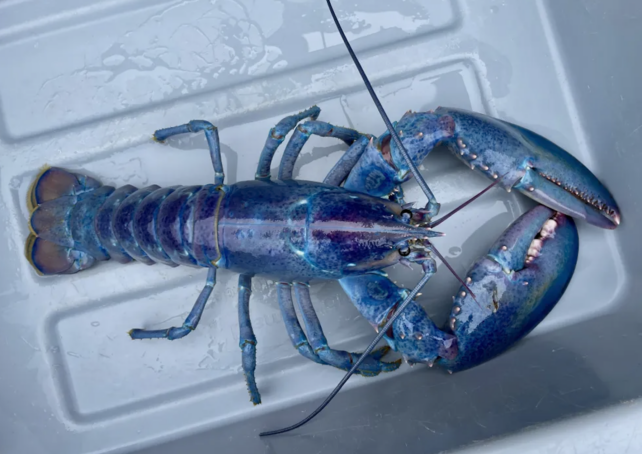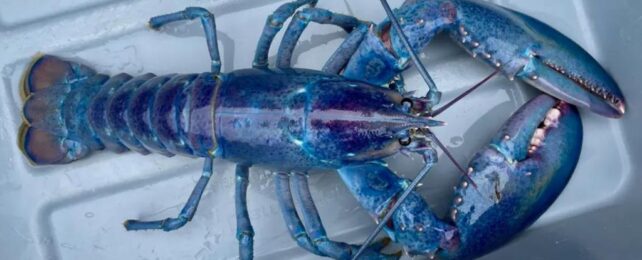In late July, a young fisherman by the name of Joseph Kramer was hauling up his lobster traps off the coast of New Hampshire when he found himself looking at a crustacean positively too beautiful to eat.
The lobster's shell was a swirling mass of blue, purple, and pink pigments, which looked like glazed, opalescent pottery when wet.

Kramer had once reeled in a bright blue lobster, but he had never before seen one with such a multitude of colors.
The lucky lobster avoided the dinner plate and was taken straight to the Seacoast Science Center, where it is now on display.
There, the aquarist Sam Rutka confirmed this was a "cotton candy" lobster – a genetic rarity that impacts just one in every 100 million individuals.
Because cotton candy lobsters aren't as well camouflaged as their brown-shelled buddies, they are more likely to be eaten by predators, making it even more exceptional that any are pulled up by humans at all.
In 2018, a cotton candy lobster was caught off the coast of Canada with a much lighter shade of shimmery pastel.
Kramer's catch is a darker shade.
A rare "cotton candy" lobster, a one-in-100-million genetic variant, was caught off New Hampshire's coast on July 31, 2024, by a local lobsterman and was donated to the Seacoast Science Center for educational purposes. pic.twitter.com/ya2GCtJsIA
— ACFA (@ACFishAssoc) August 1, 2024
A typical lobster's shell might look brown on the surface, but it is actually made of red, yellow, and blue pigments.
Genetic mutations can sometimes cause one pigment to smother the rest.
Red lobsters are the most common color variation, occurring in 1 out of every 10 million individuals.
Orange, yellow, and split-colored lobsters, meanwhile, can range from 1-in-30 million to 1-in-50 million.
Cotton candy lobsters and albino lobsters are the rarest of the lot, occurring in 1 out of every 100 million.
This year was Kramer's first year using his own gear to catch lobsters. He told Ian Lenahan from the Portsmouth Herald that he hopes his good luck continues.
